Following the success of her indie box office smash Kita Kita, Sigrid Andrea Bernardo’s fourth feature Mr. & Mrs. Cruz has delivered to audiences yet another self aware romantic comedy. It tinkers with time, space, reality and genre expectations and revolves around themes of love and relationships and their inevitable complexities. Always someone to manipulate narrative structure, there’s also a beautiful trend with her movies to include a dose of magical-realism. Mr. & Mrs. Cruz flashes forward, backwards and seemingly sideways too but the magical-realism, while certainly present, is a little less so than past films. However, adding to her ever-growing repertoire, and to possibly make up for the magical-realism deficit, she has introduced a subtler element to the film in the form of symmetry.
It is the exaggeration and the placement of symmetry within the film that heightens this stylistic element, allowing the more ‘magical’ elements to occur without breaking the narrative flow in the way that a flashback or waking dream does. The film still includes these elements but it is the use of symmetry that is of particular interest. She is certainly not the first director to use symmetrical composition to amplify her narrative drive but the beauty of its use in Mr. & Mrs. Cruz is that it is not just a visual style; it is also present within the characters, their actions, storylines and backstories. With the unfolding of the characters within the film, they are gradually revealed as indeed very similar though not identical.
Symmetry in action
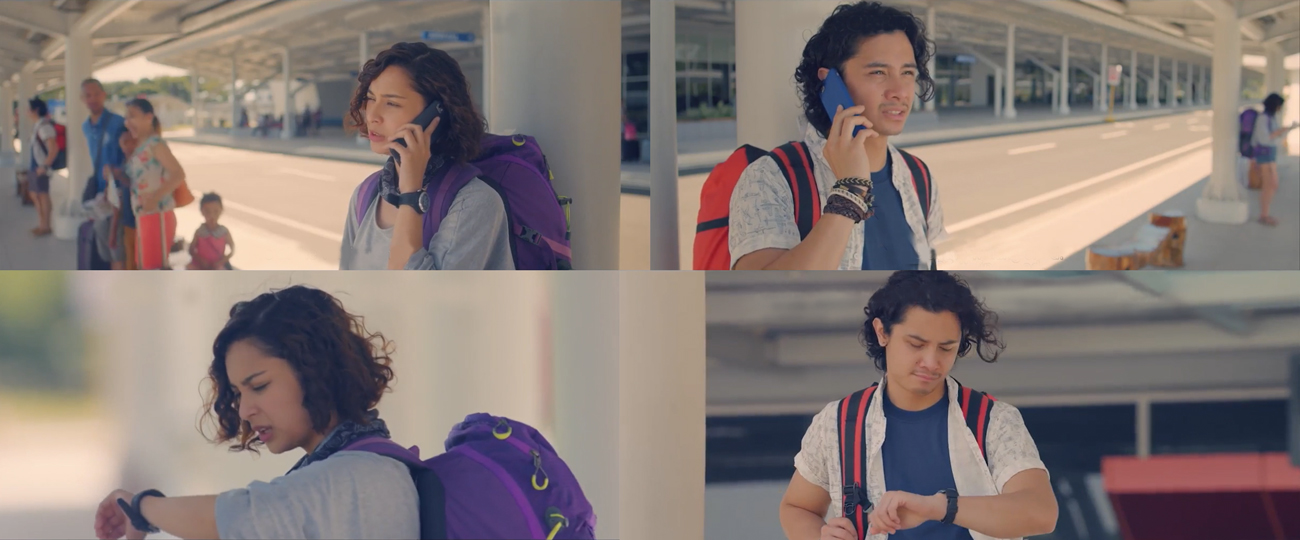
The first instance we see symmetry unfold is in the arrival scene where characters Raffy (JC Santos) and Gela (Ryza Cenon) are found waiting outside of an airport. It’s not the opening scene but their predicament and the introduction of symmetry in this scene inform and embellish the story to come.
Both mirror each other’s actions, one followed by the other. Both receive a call from the resort transfer saying that they are running late and both characters reply, “It’s okay” and “I’ll be in the waiting shed”. After this, the pair receive a phone call from their concerned friends and again it is more or less the same conversation. This time the phone conversations are intercut using similar, matching shots. Both say to their respective friends that they have landed and that they will be okay.
In this instance, the symmetry in action does more than introduce and focus the viewer on the two main characters. It is a subtle message that they have more in common than just two random strangers at the airport, similarities that will soon become more apparent.
Visual symmetry and single point perspective

It is also in the airport scene where the first front-on and flat symmetrical shot is seen. As seen above, this shot, framed in this particular style, can be seen throughout the entirety of the film and serves as a visual reinforcement of the characters’ narrative journey.
It has everything to do with where Gela and Raffy are positioned within the frame. The use of single point perspective here draws the viewer’s eye to the centre of the frame, which is notably empty. Bernardo communicates clearly to viewers that both characters are never really quite together.
Later in the film, both Raffy and Gela are forced to share a hotel room. The hotel room is the barometer of the relationship. They venture out and about into the natural beauties of the Palawan land and seascape, discovering each other’s stories, bonding and interacting with their tour group but they always check back to the hotel room. This is where we find out how they are really going.
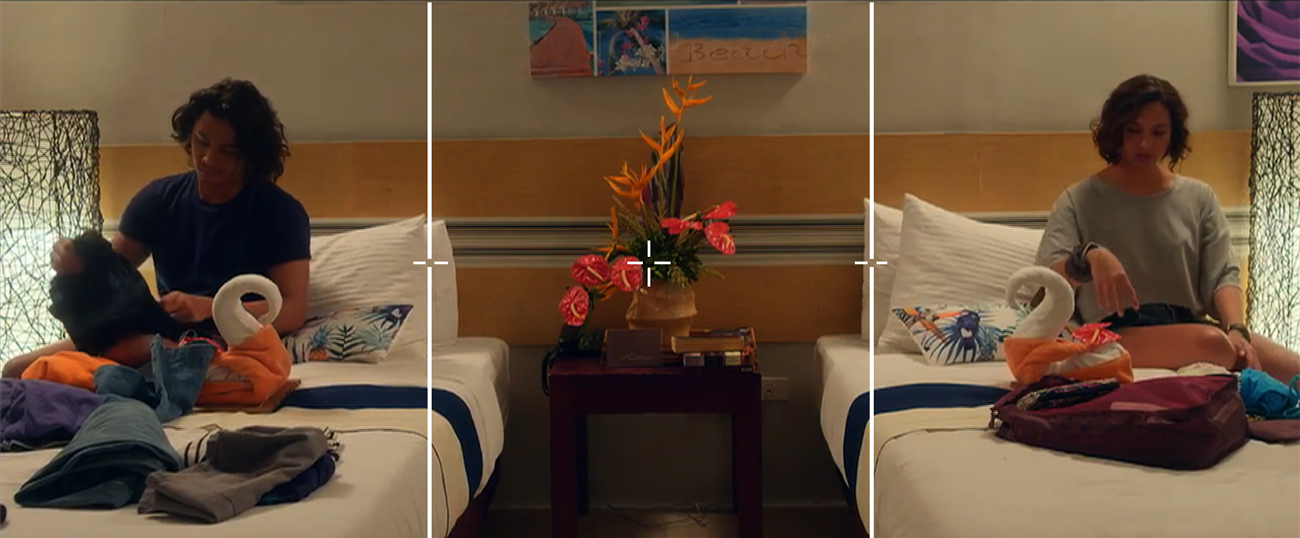
The setting is dressed with identical features: two of the same bed, two pillows and a cushion on each bed, plus the same bedspread. There are identical bedside lamps as well on either side of the frame’s edges and a painting and a vase with flowers that split right down the middle. Once again, both characters occupy opposite ends of the frame with a chasm in between. It’s a clear metaphor for all that stands between them.
Towards the end, they push their single beds together, in unison, maintaining but shifting the symmetry and altering the focus of the gaze. And with their beds together, their souls have not quite made it yet but that is soon to change. The characters cannot fight the composition, especially since they’re the ones who’ve rearranged it. To put it another way, they’ve literally just made their own bed and now they must lay in it.
When the two finally do close the gap and enter that inner third together, we implicitly understand that this is an important moment in the film. They bond over drinks and though clichéd it may appear, it also demonstrates that Bernardo and her cinematographer Roberto Yñiguez, are operating on a deeper level too.
Character symmetry
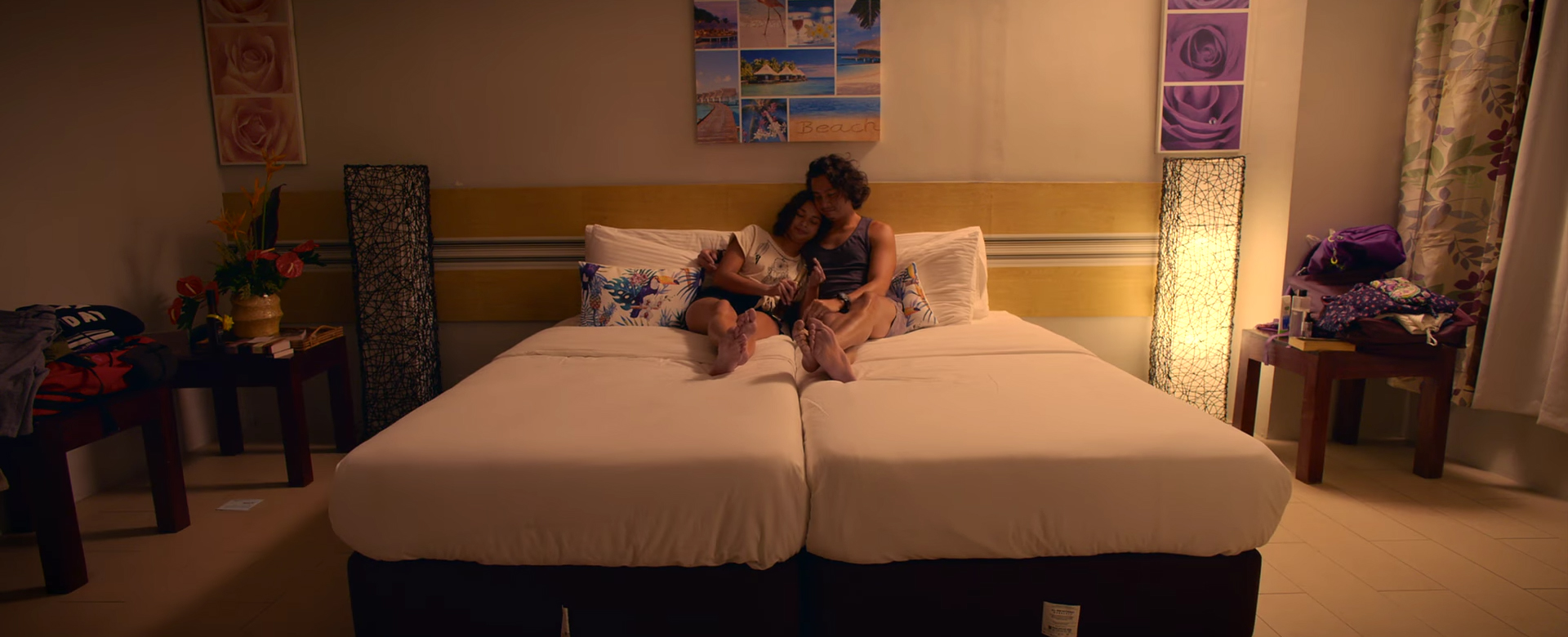
Aside from symmetrical framing, we also see symmetry in both characters’ backstories too. Both experience the heartbreak of a broken marriage and through hearing each other’s perspectives, they are able to come to some resolve or inner peace.
Raffy was left standing at the altar while Gela, we learn, left her husband after three months of marriage. Neither has an explanation for their personal tragedies. Yet after hearing Gela’s story, and why she left as she did, Raffy learns why his partner may have left him on their wedding day. In getting into her headspace, he can find some inner peace around this turmoil. The reverse is true for Gela, she gets an inkling through Raffy of what she has done and what he and her partner may have gone through.
Both characters also possess the same surname – hence the title of the film – which also leads to some clichéd but fun moments. From the get go, confusion as to the exact nature of their relationship abounds but the base assumption from guests and staff is that they are a married couple or they were or they are about to be. Their tour group has six people in it, an older couple celebrating their marriage and a younger just married couple with Raffy and Gela in the middle. As they see the sights and do activities as a group, there is lots of talk and advice about relationships that come from both of these couples and from the perspectives of where they are at within their marriages.
Symbology and Symmetry – Revisited
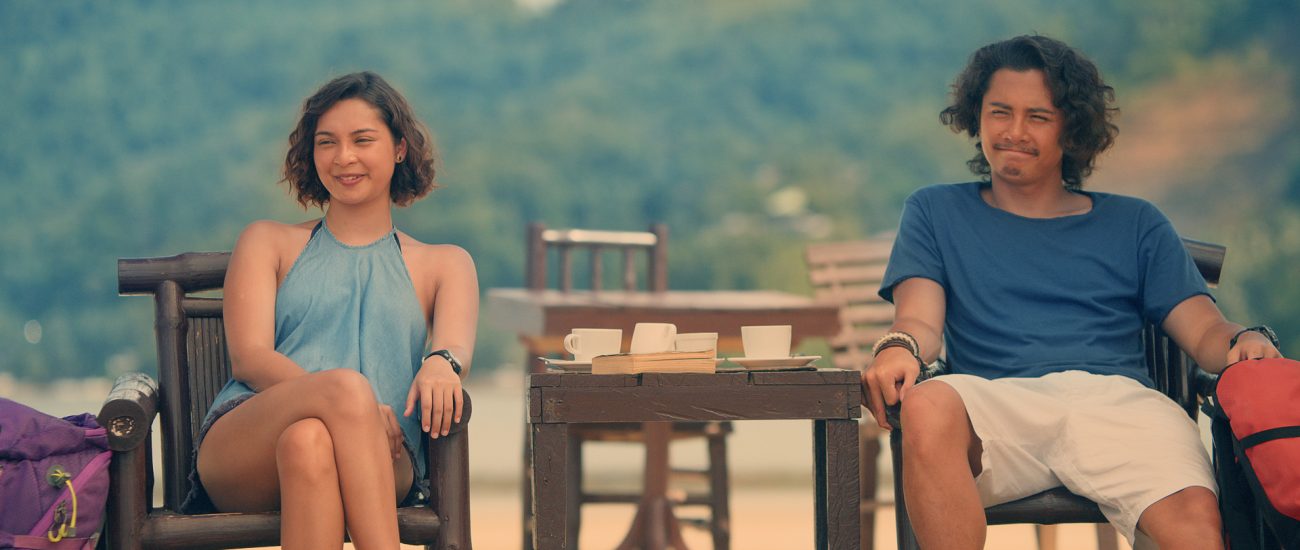
Our last visitation of the visual symmetry for Mr. & Mrs. Cruz is a scene where both characters are sitting by the beach in resort chairs just before they are to leave.
Once more, they are seated on the outer thirds of the frame with a table occupying the middle. They confirm their attraction to each other, the pleasure and fun they have had and agree there may be no future for them as a couple. Raffy wants to keep seeing her but Gela is quite insistent that it won’t happen. They talk and jest and laugh.
Just in case you thought that all of this was a bit of a stretch, we have the signature shot of Mr. & Mrs. Cruz almost at the end of the film that lays claim to all of the above. It’s the official stamp of the director; it has her name on it and it contains the mirror image symmetry and use of horizontal thirds that has been extensively covered in this analysis.
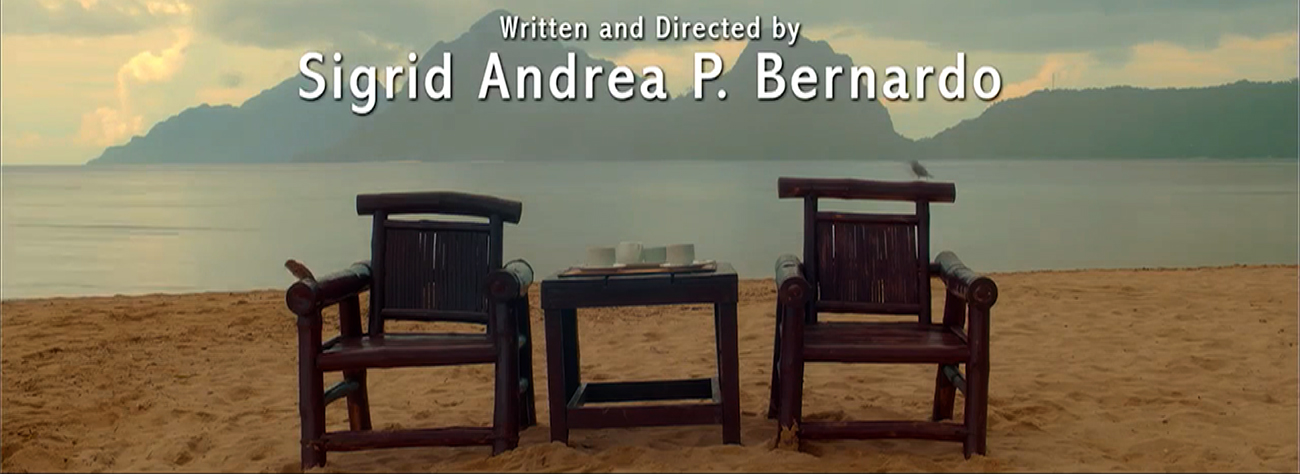
Both chairs are now empty and separated by a chasm; but what does this mean? Gela and Raffy have left the frame; will they get together or are they going their own separate ways? Have they broken free of the rules of geometry and symmetry? Are they now able to project a future also free of rigidity, rules and regulations? Free from the constraints of their pasts. The answer may be contained in the book that is in the centre of that frame: Romeo & Juliet.
Mr. & Mrs. Cruz is certainly not Bernardo’s best film in her growing filmography but it is not a bad film. It’s beautifully shot, has a very pretty cast that’s accomplished in their acting (mostly) and its riffs on broken hearts is quite universal but it is still marred by some pretty serious flaws.
Her musings on the intricacies and complexities of the web of love, though clearly on point, are a bit long winded and exhausting with some scenes labouring the subject well beyond the point of comprehension. Perhaps the actors aren’t sustaining the drama but it feels more that the writing is too much; some scenes are drawn out to the point where the beauty of Gela and Raffy and the amazing settings cannot sustain the viewer. It feels like a long film and clocking in at just shy of two hours, it is a long film.
The shame is that riding on the back of Kita Kita her audience will be potentially the largest she has ever had. But in terms of production value, she just keeps getting better and stronger with each film. Style and form are very interesting, with the magical realism becoming more subtle and integrated into the reality. Her message and exploration of the human condition of love is just as ever playful but always it has its serious undercurrent.
